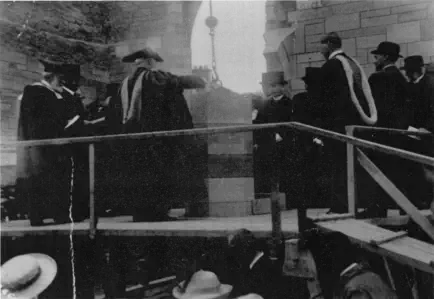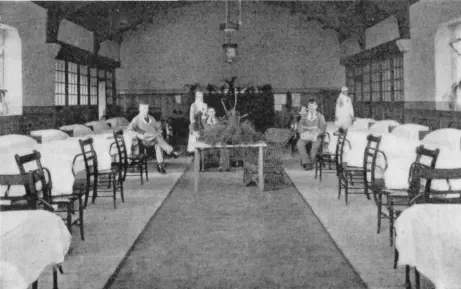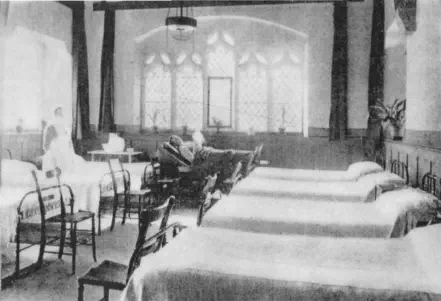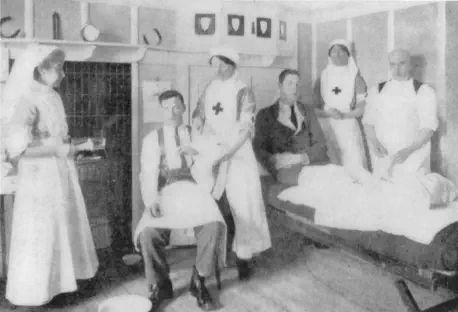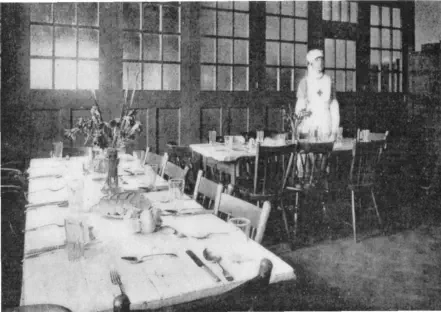The Building of Portland UF Church and the First World War, From 1913 to 1919
The laying of the Foundation Stone 1913
In 1913, the plans for the building of Portland United Free Church were coming to fruition. The architect had
been appointed and the building was well underway, with funding being secured from the Ferguson Bequest
Fund for the sum of £250 (which equates to £24,422.80 in today’s money). A special event to mark the
occasion of laying the memorial stone (behind which was placed a time capsule) took place in June, the organ
builder Harrison and Harrison had been appointed and had built an organ for the church at the cost of £800 (in
today’s money £78,152.96) – half of which was paid by the Carnegie United Kingdom Trust; the interior White
American Oak had been imported, the font and pulpit had been carved from Auchenheath white sandstone, the
cast lead basin for the font had been made by the Bromsgrove Guild of the Applied Arts in Worcestershire at the
cost of £4 12 6 (which would be £451.82 today) and the Florentine mosaic Iona marble flooring (possibly the
last marble from Iona) had been purchased for the chancel costing £31 10 1 (which would be £3,077.68 in
today’s money).
The estimated finishing date for the building was to be Easter 1914. Mr Brander had organised for Dr
MacGregor, the former minister of Portland UF Church, and who would later become Moderator of the United
Free Church of Scotland, to preach the opening services on Easter Sunday. It was also proposed that there be
an opening service on the Saturday afternoon, both of these events duly took place. The old church was to be
advertised for sale in the Glasgow Herald during the month of October and everything seemed to be going to
plan. The world however, with the assassination of the heir to the Austro-Hungarian Empire, Archduke Franz
Ferdinand and his wife Sophie on the 28th of June 1914 , was about to be plunged into the darkness of the First
World , and that had significant consequences for Portland United Free Church.
The first action by the Deacons’ Court following the outbreak of war came after a request by Lady Arthur, who
asked if the Red Cross Society would be allowed to the use the hall as the Red Cross Society required a hospital
building; the hall became a ward, the choir room became a dining room and the vestry became a surgical room,
and the old Portland Street Hall become a Soldiers Club.
Almost immediately afterwards, Rev George Brander felt compelled to enlist as a private soldier in the Scots
Guard regiment of Lord Kitchener’s army and offered to resign from his charge at Portland UF Church, this
resignation was unanimously rejected by the Deacons’ Court, instead they gave Mr Brander leave and decided to
fill the vacancy with a Locum Tenens. The Court recorded “its appreciation of the self-sacrifice involved in the
step taken by Mr Brander and express its pride and admiration for the noble example he set to the community in
enlisting as a private soldier in the Scots Guards”. The church secured the services of Rev Alex Crichton MA, an
assistant minister from St Paul’s Church in Dundee, on a six month basis as locum, although should a church
wish to call him as minister in the meantime, he would be released. The Deacons’ Court agreed to pay him £150
per annum, and pay Mr Brander the sum of £100 per annum. Mr Crichton ultimately filled this post until
February 1916, when he accepted a call to Dundee, he was replaced by Rev Clough at a salary of £160 per
annum, plus the use of the manse.
On the 9th of November 1915, the news came that Mr Brander was reported missing in action and it was soon
confirmed that he was a Prisoner of War. Many of the young boys who were in Portland UF Church were on the
front lines and on the 15th of February 1917, a request was received from Mrs Symington of “Windyhaugh”, who
was seeking permission to place a memorial tablet in the church in memory of her son Percy, who was killed
aged 20 on active service and is buried in Flers, the Somme. She also wished to hold a memorial service on the
1st of April, which was duly granted and that magnificent tablet was placed on the wall in the East Transept,
where it still is today.
The guns of the First World War fell silent on the 11th of November 1918 and with the end of that awful conflict
came a time of rebuilding and adjustment. The old church was sold in February 1918 to Mr Muir, one of the
Office Bearers, and after being away at war for five years, Mr Brander was finally demobilised and returned to
Troon in March 1919.
The Main Hall was used as a hospital ward.
The current store room and toy store was used as a ward
The Vestry was used as a surgical room. The Choir Room was a dining room.
